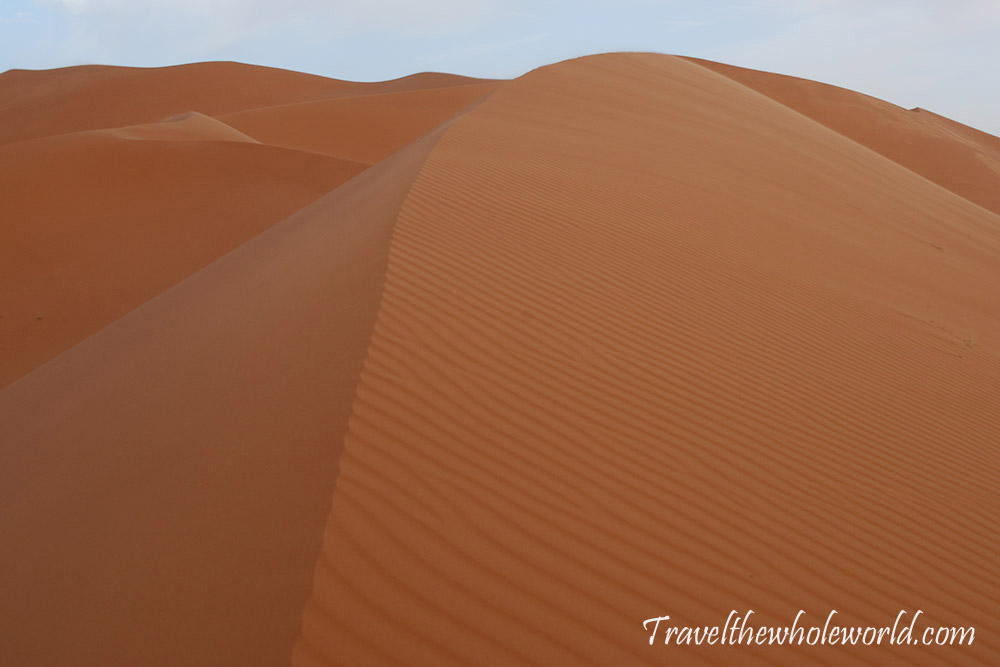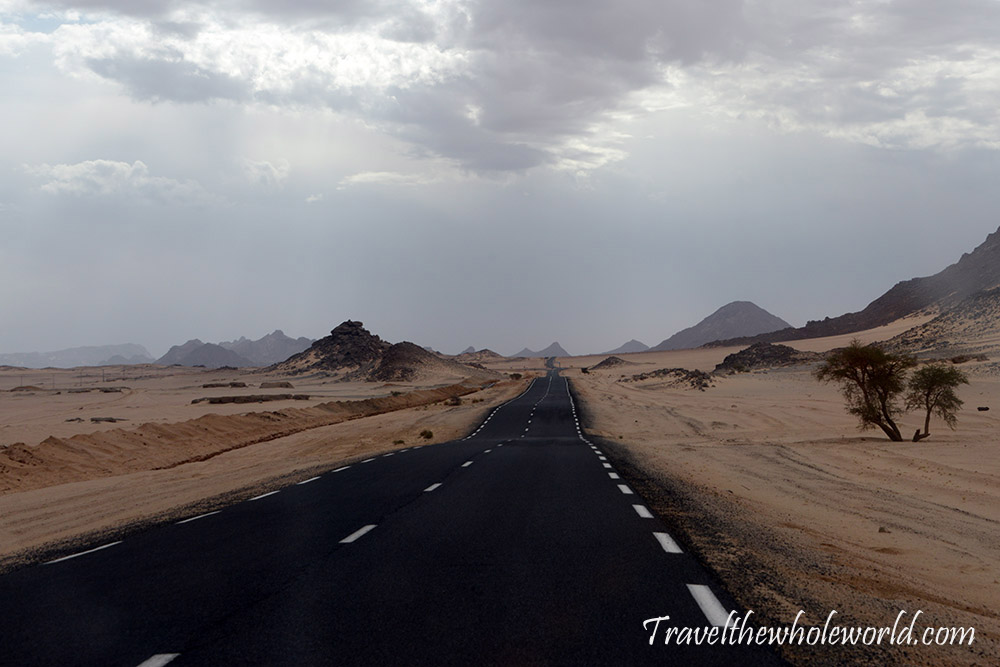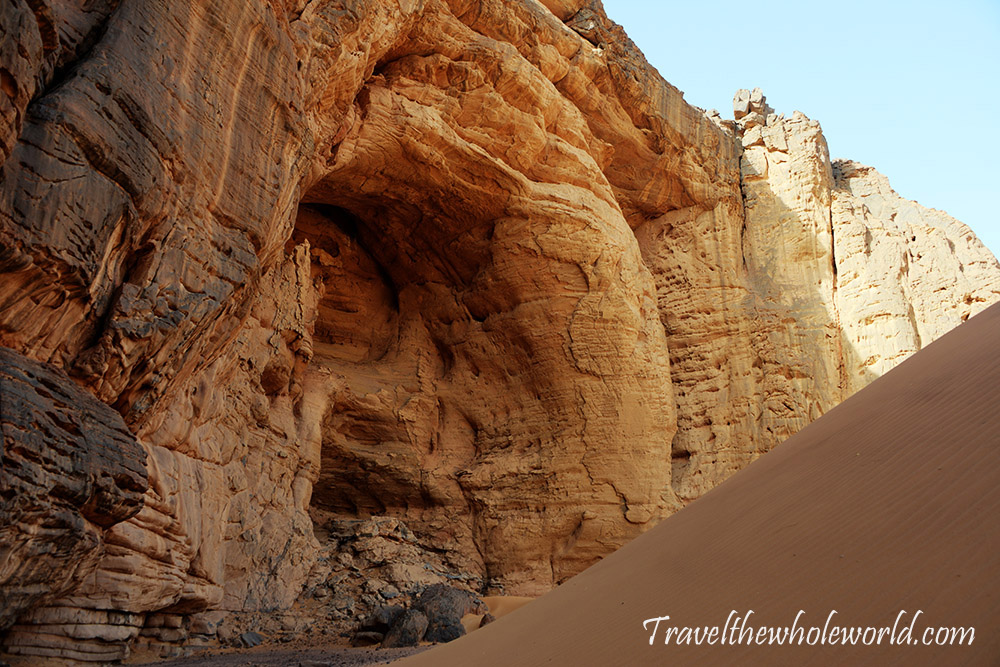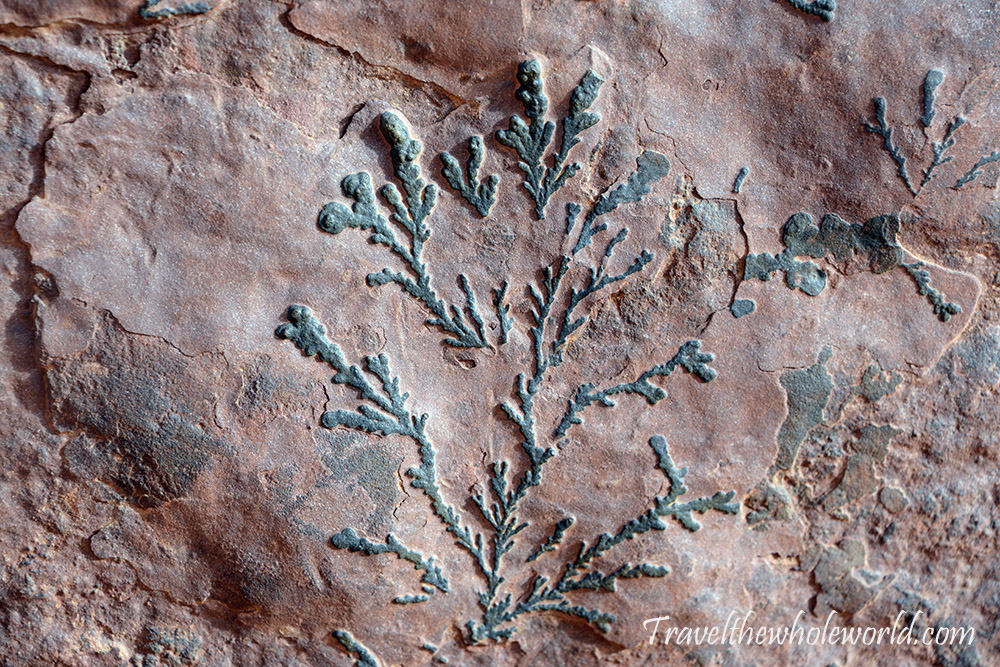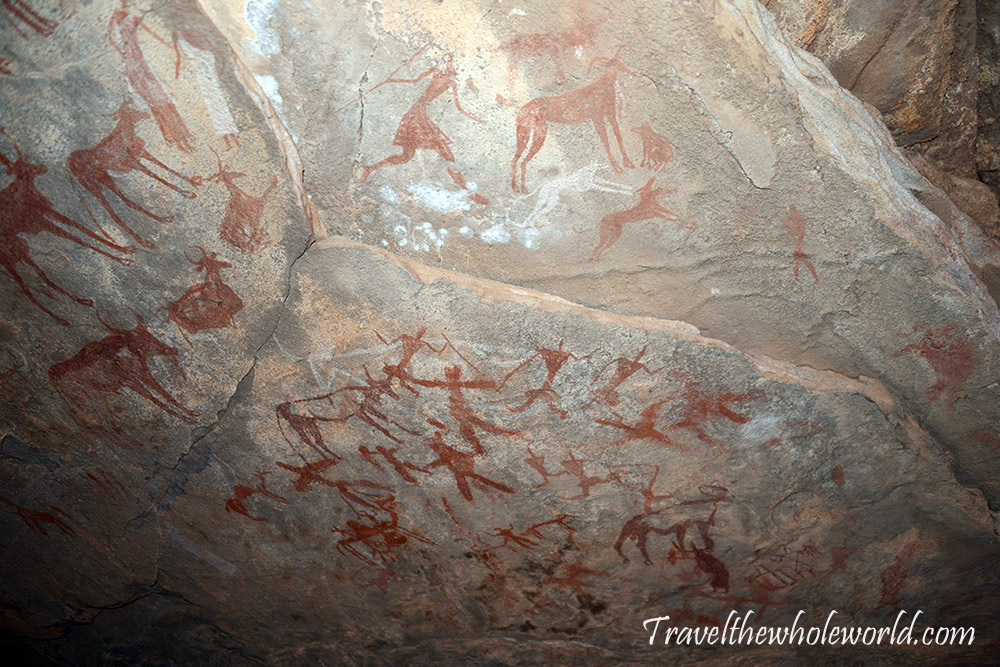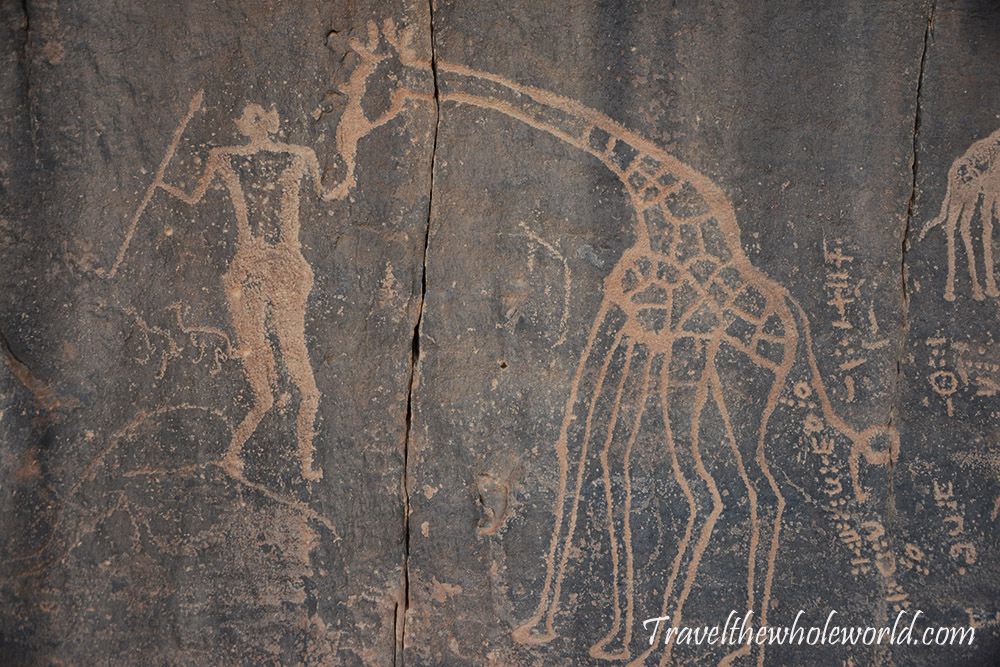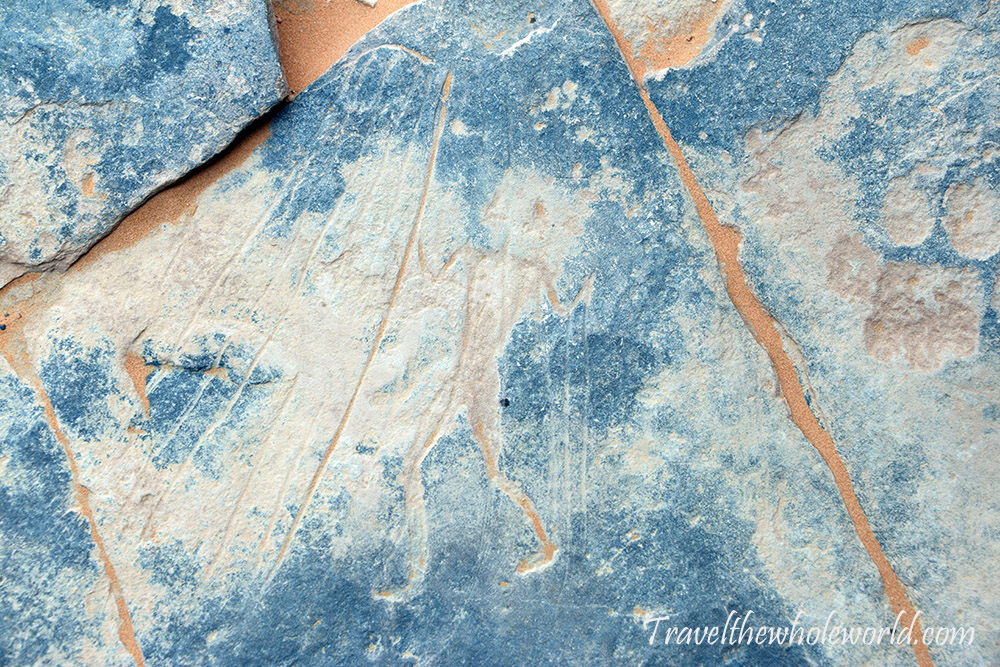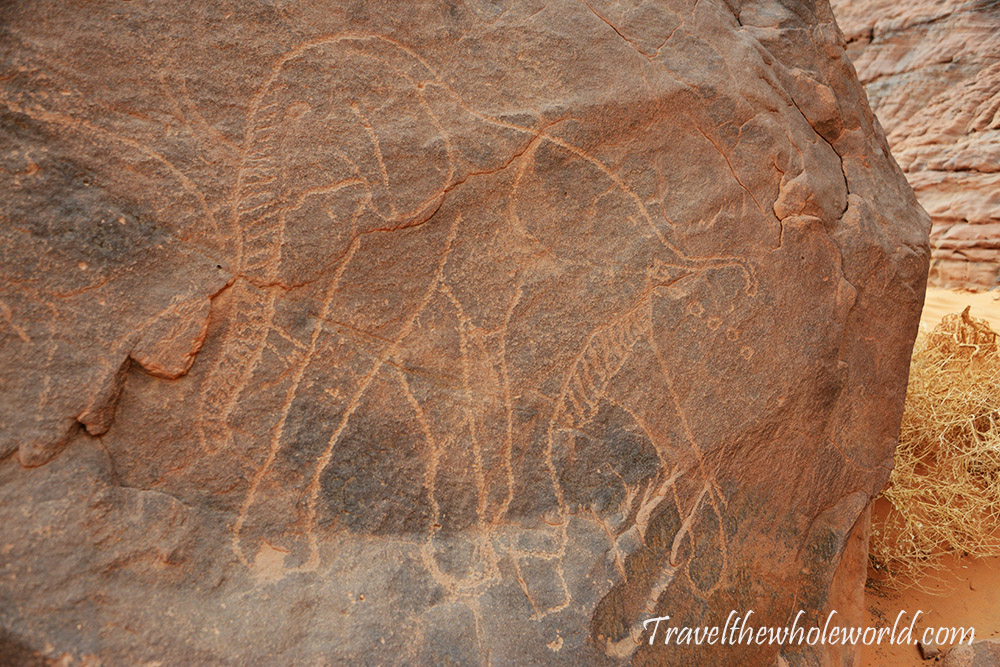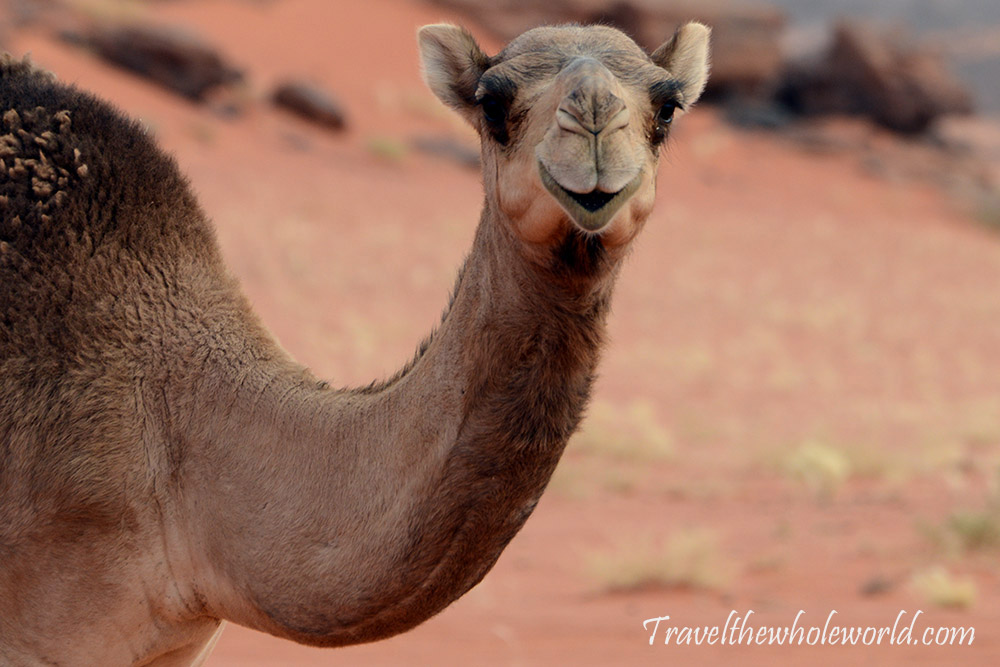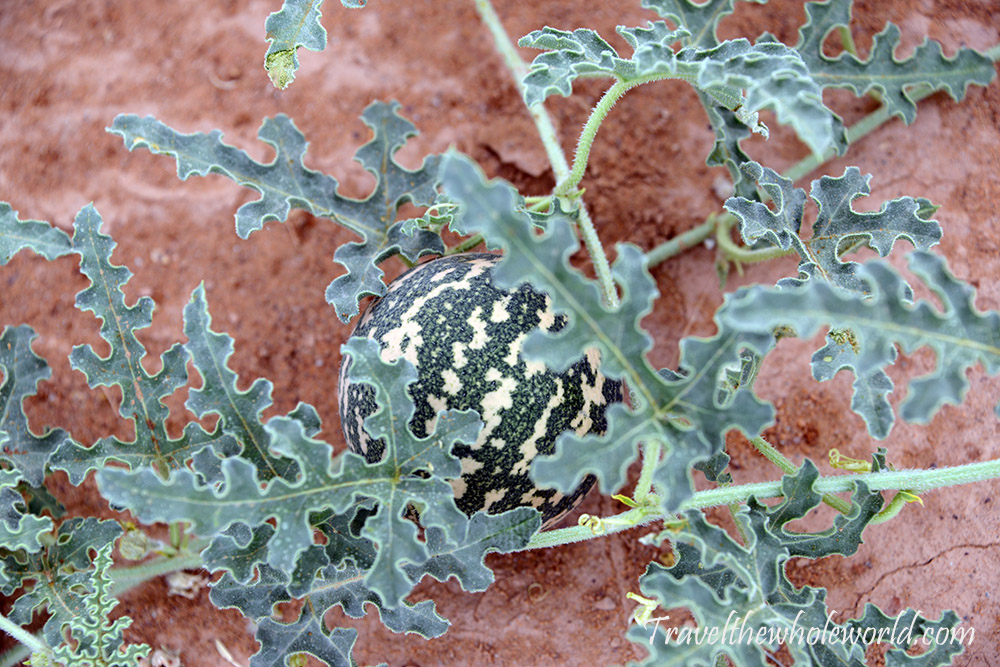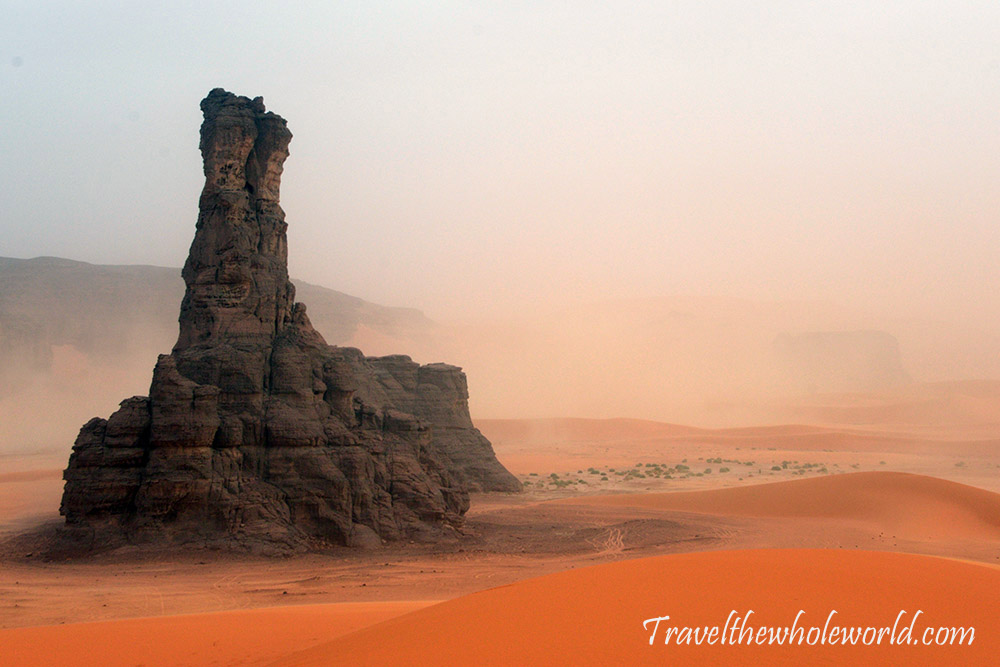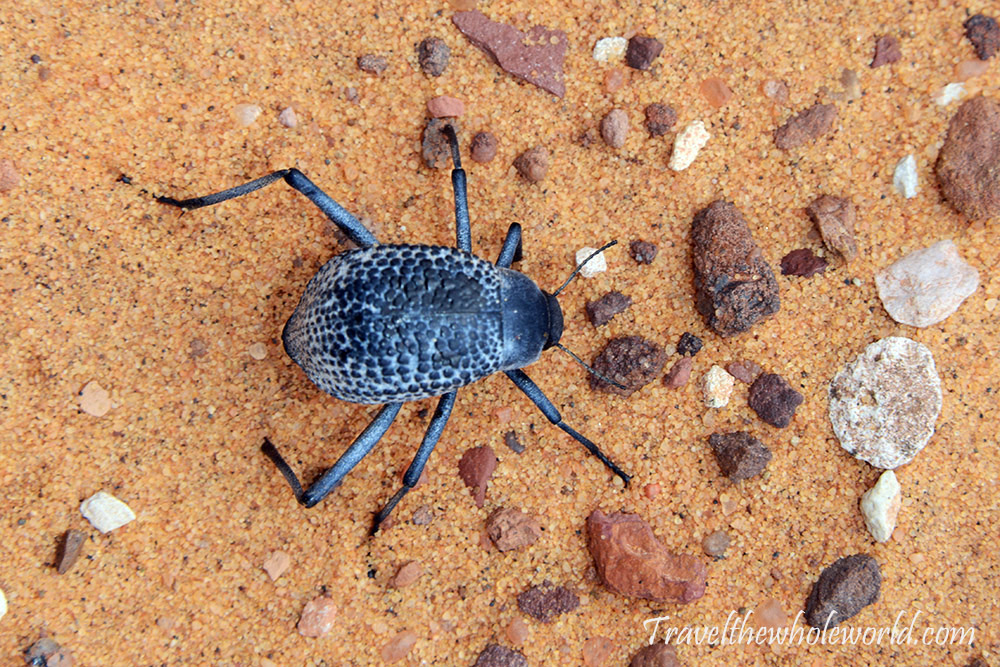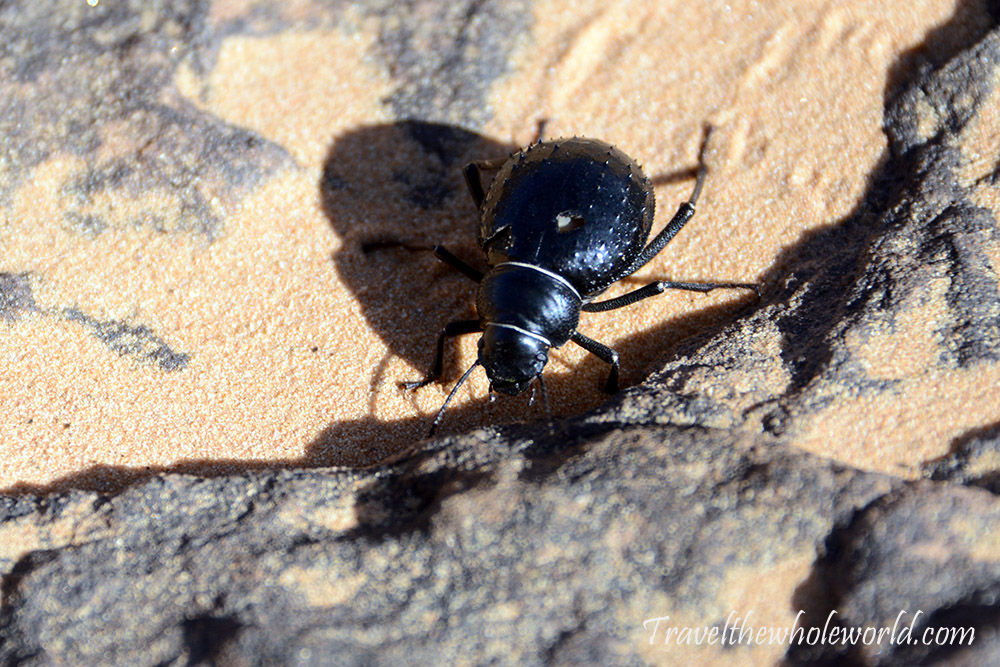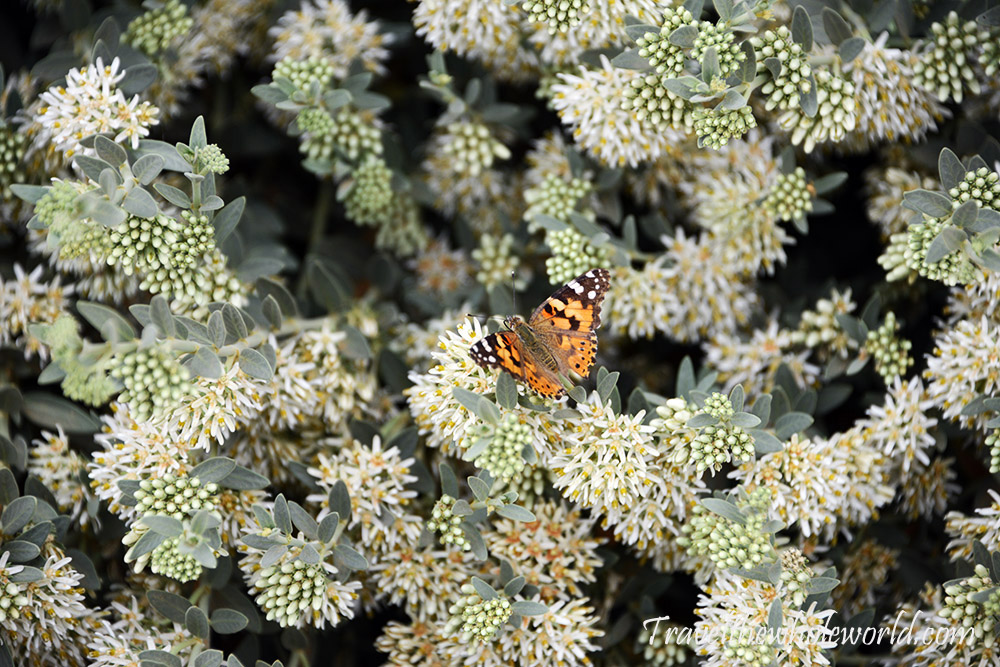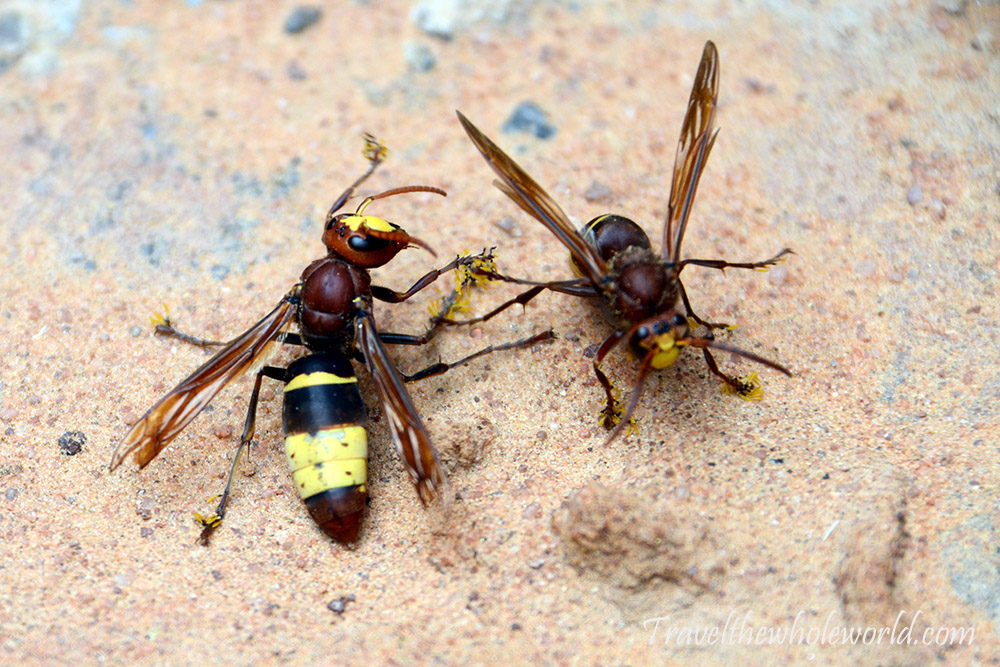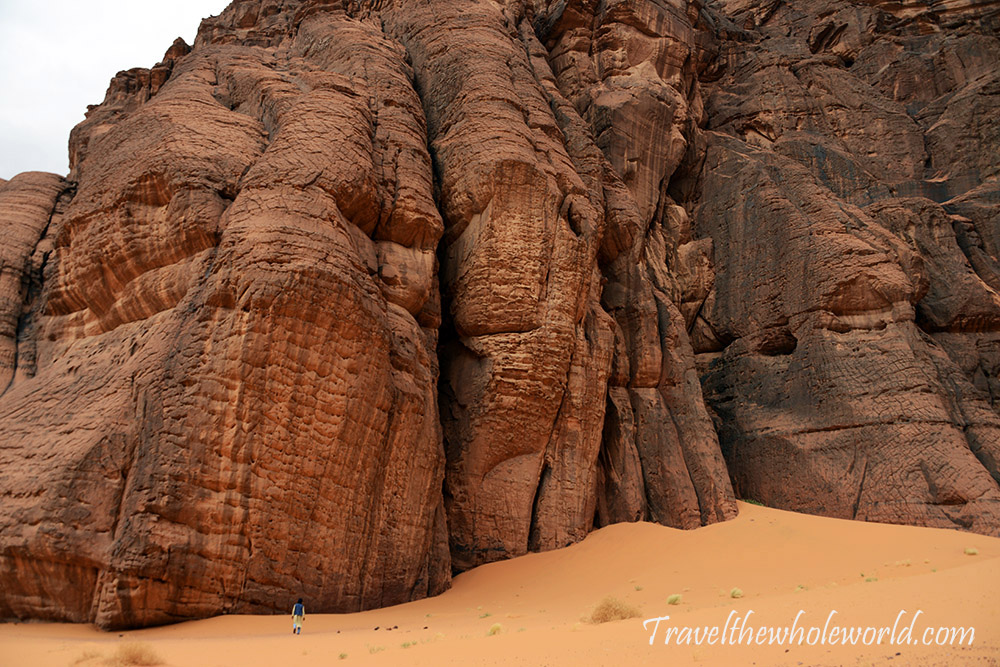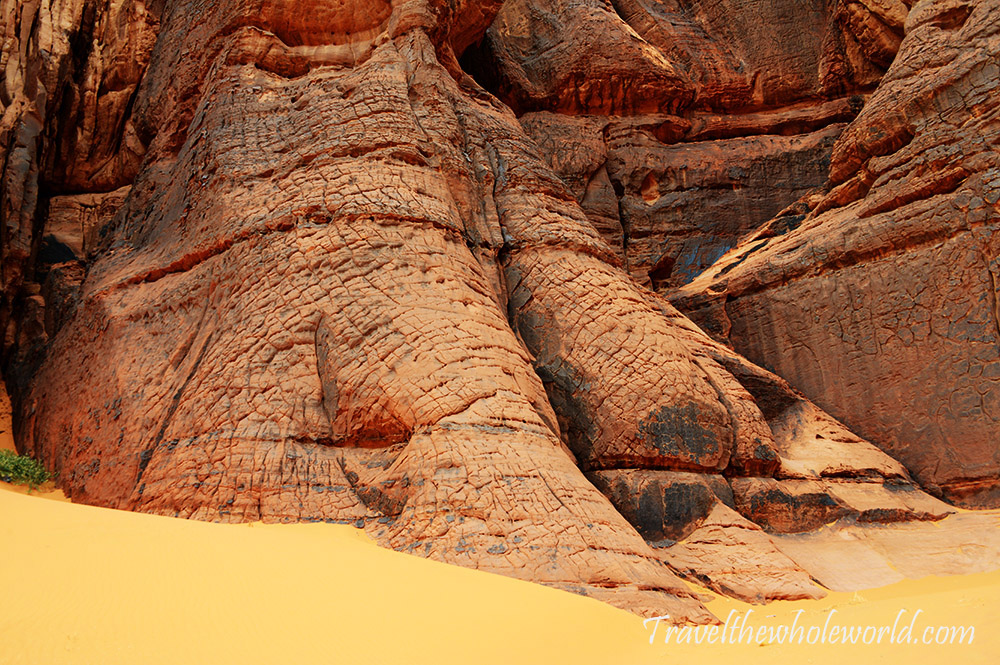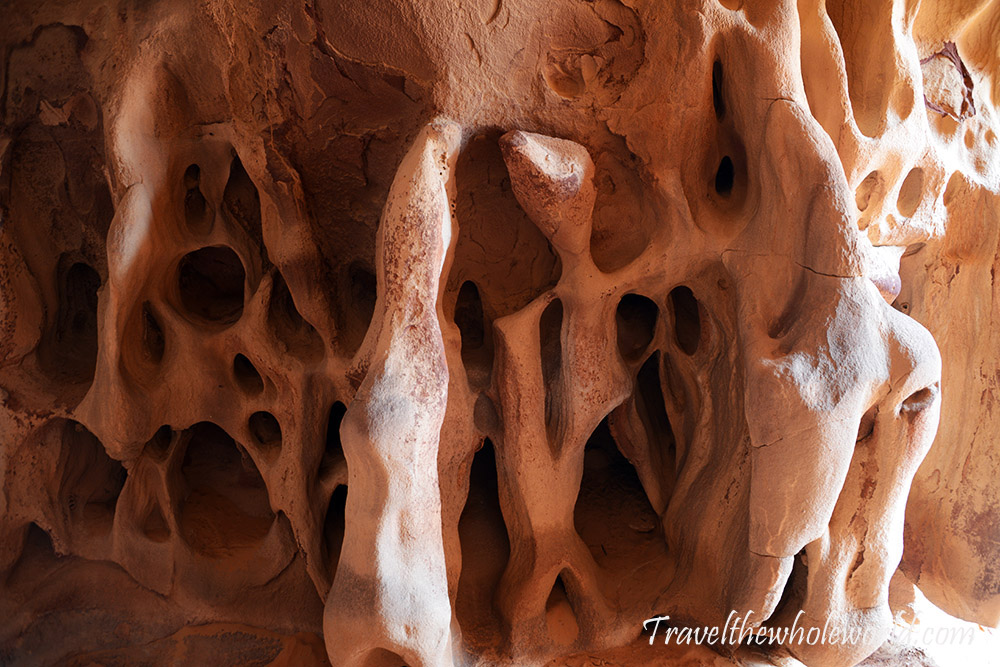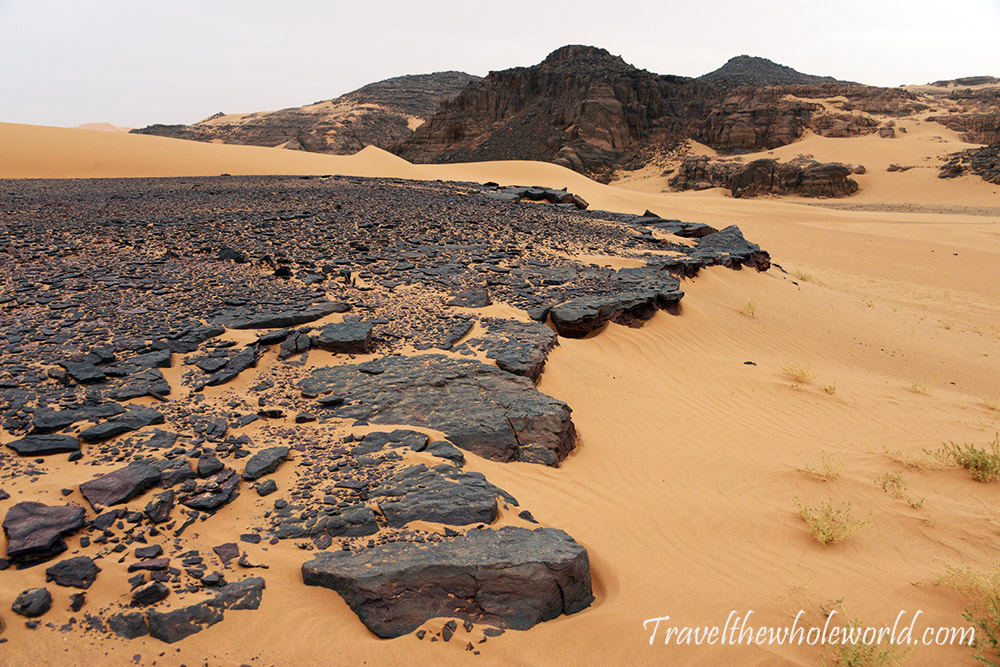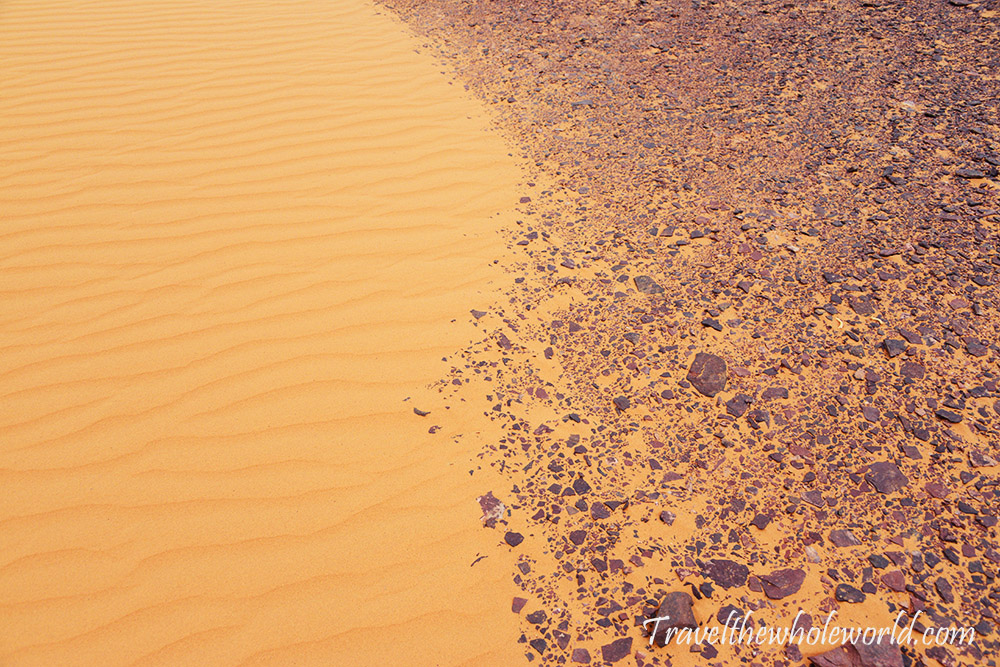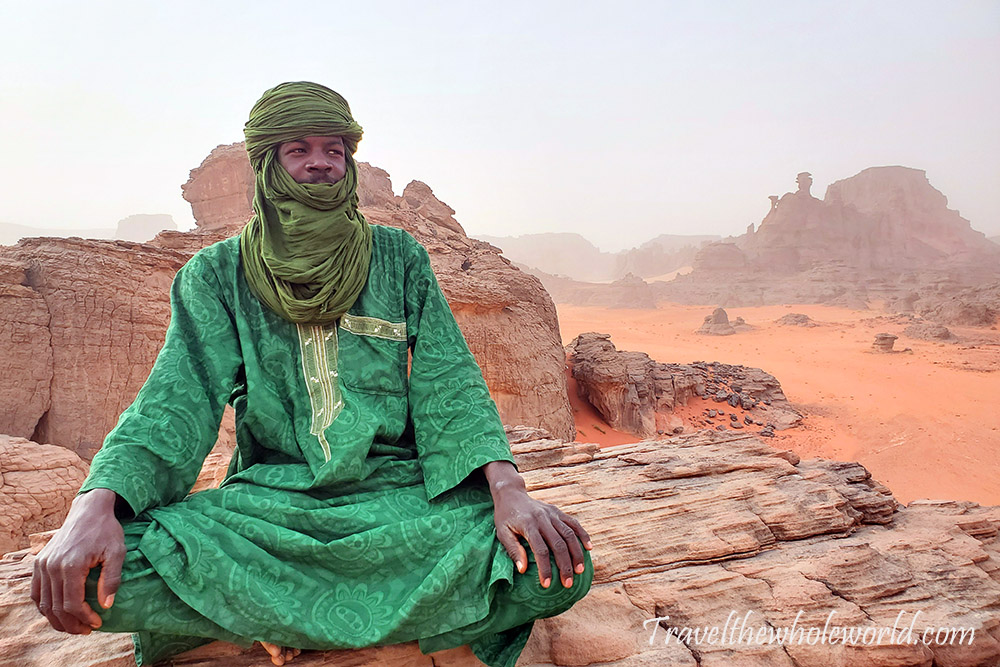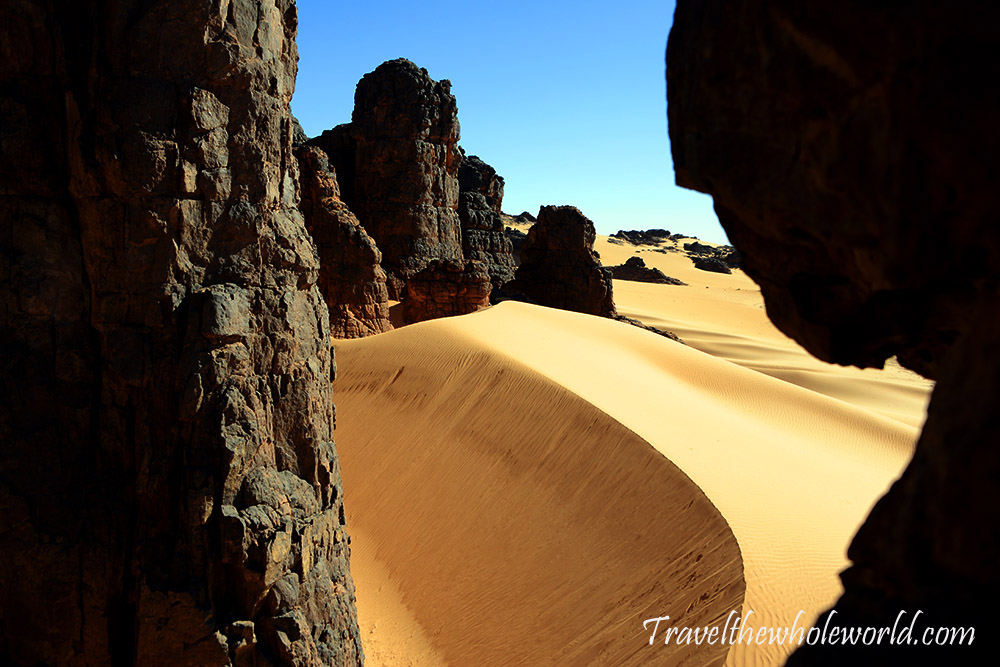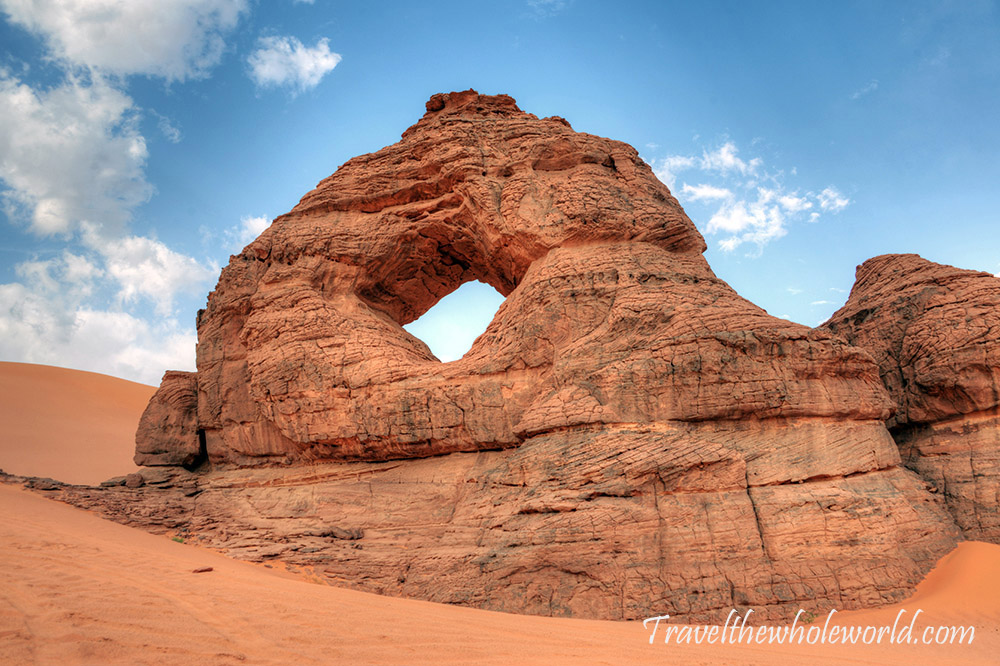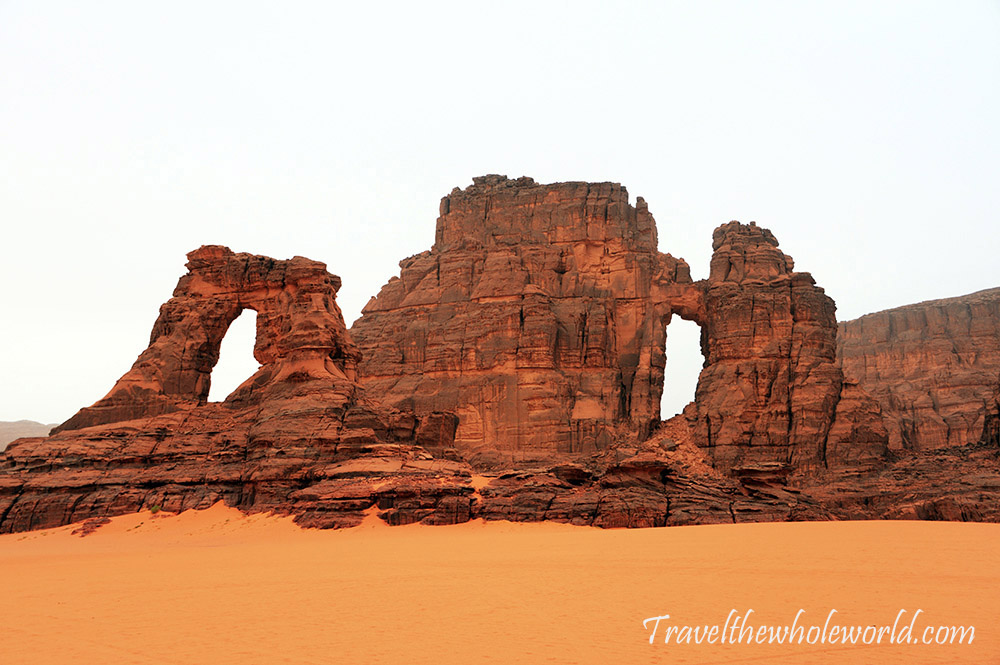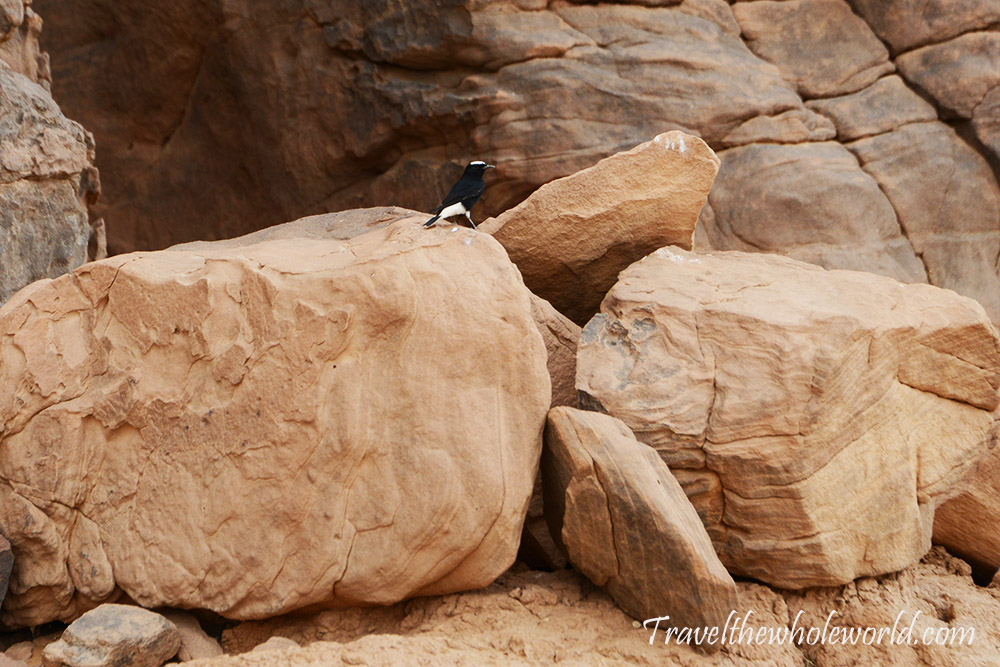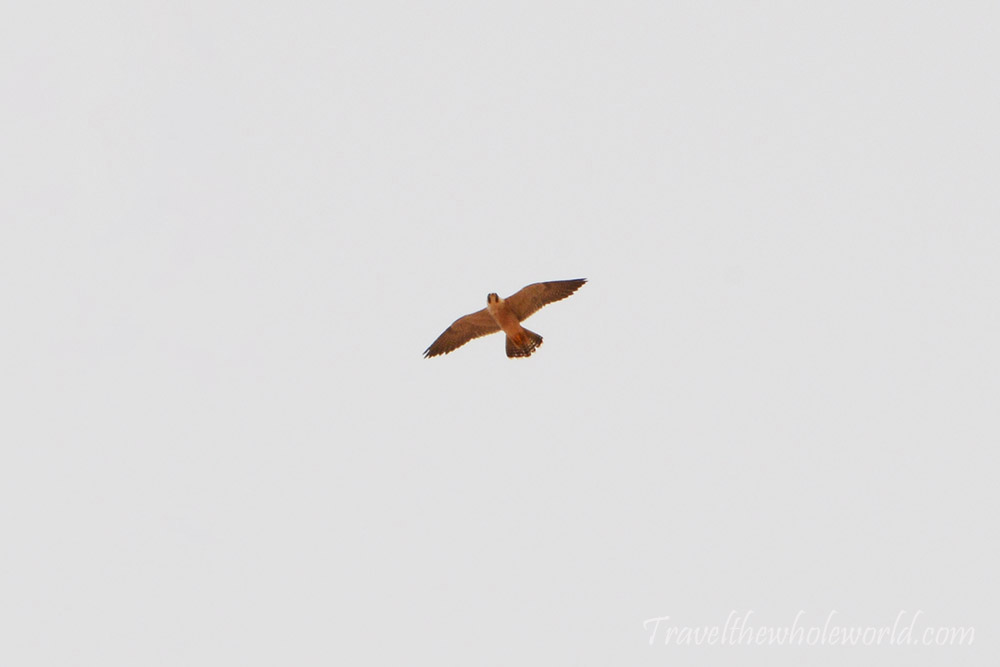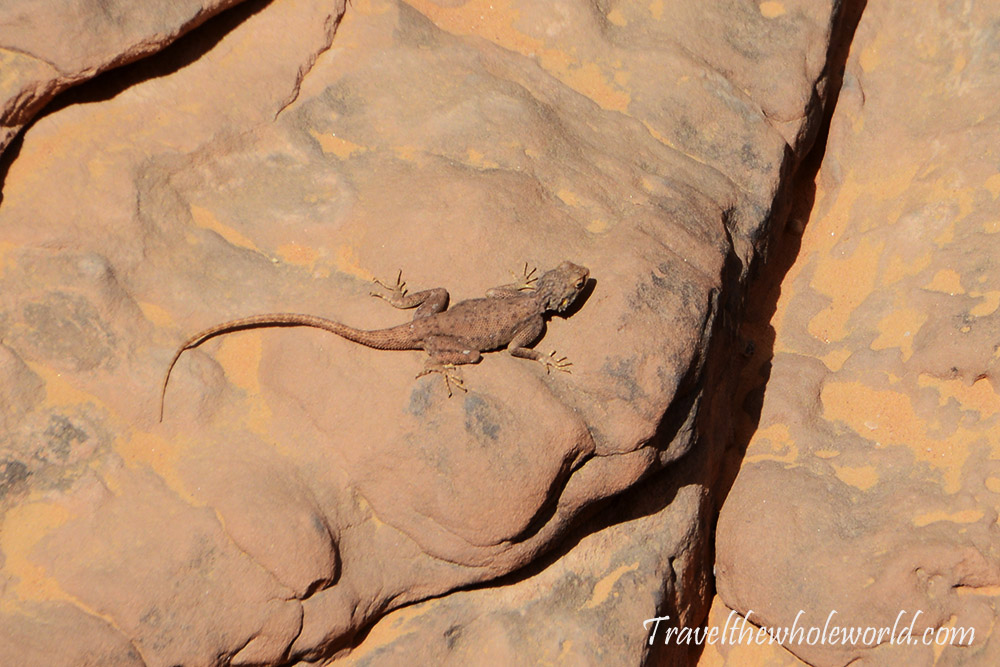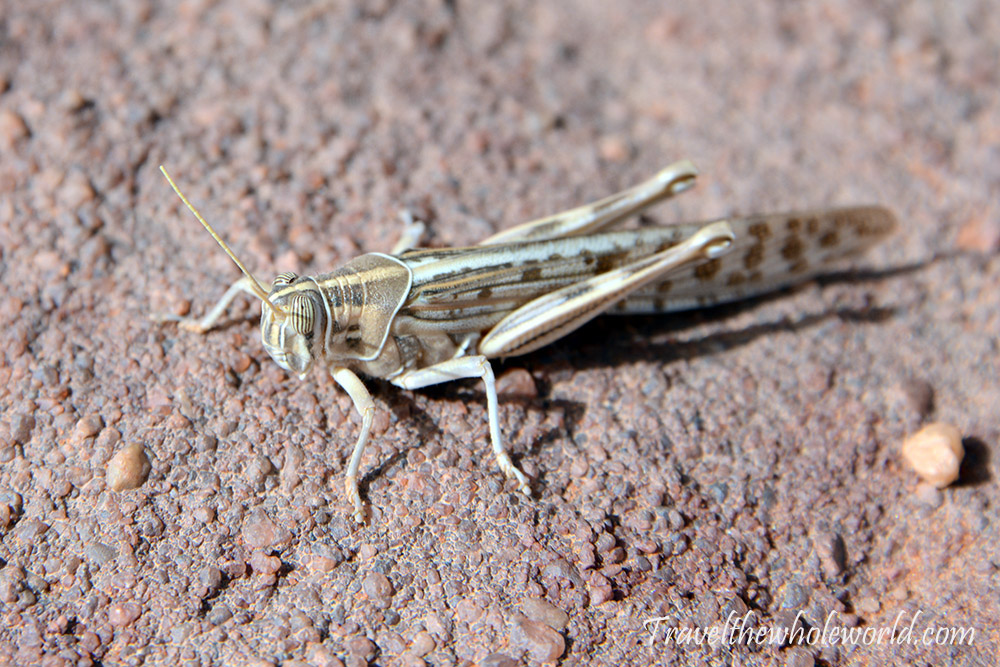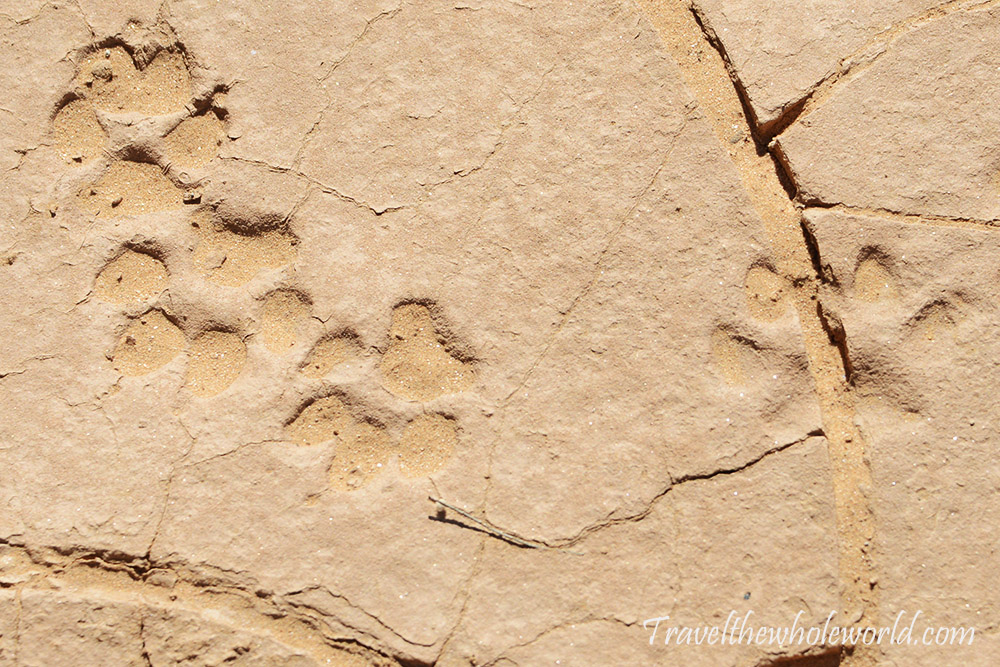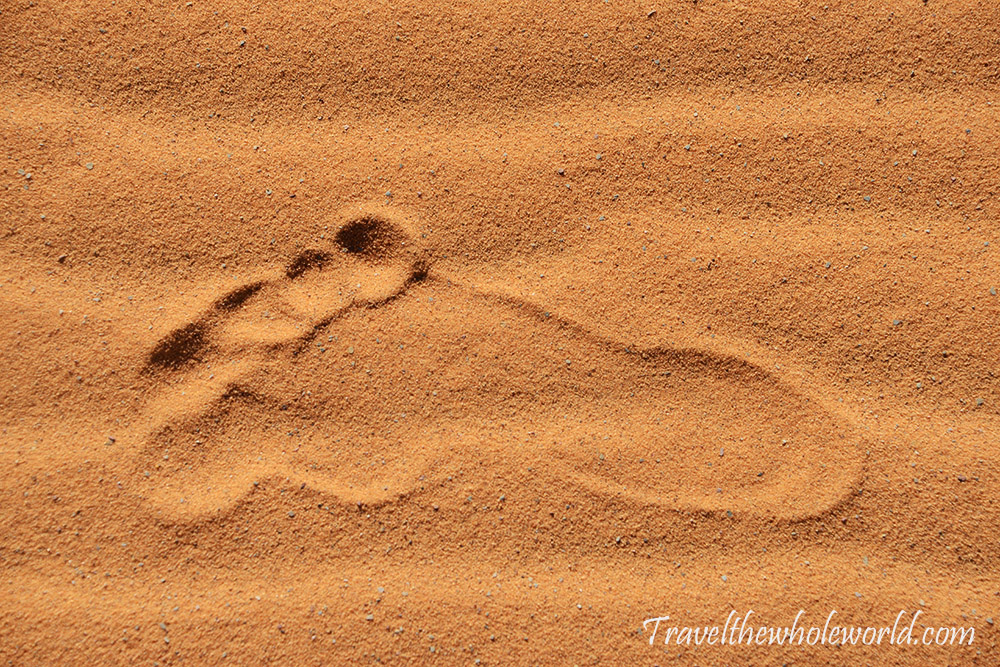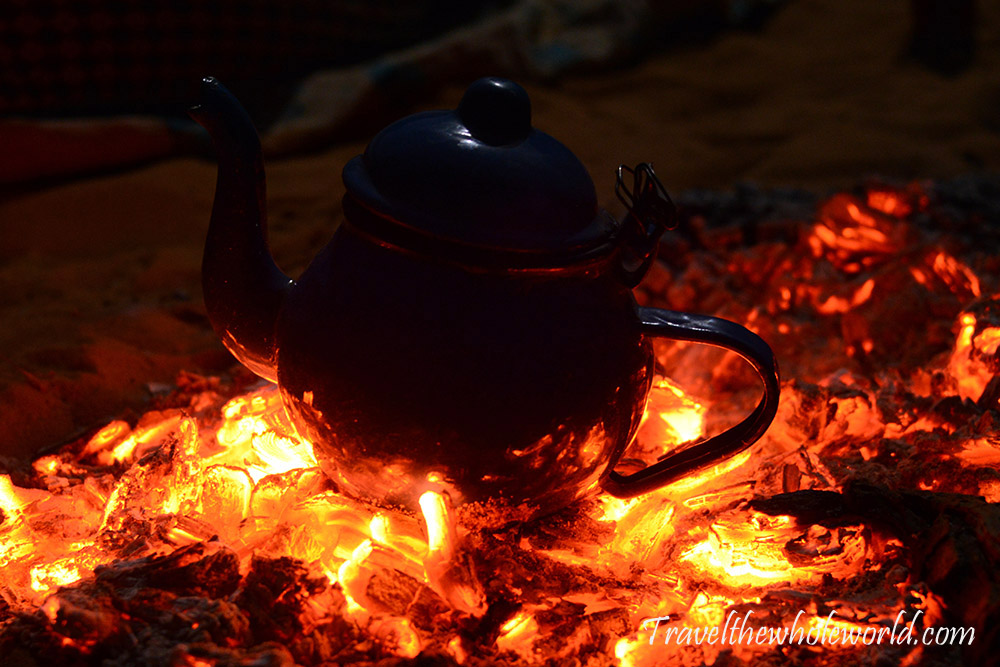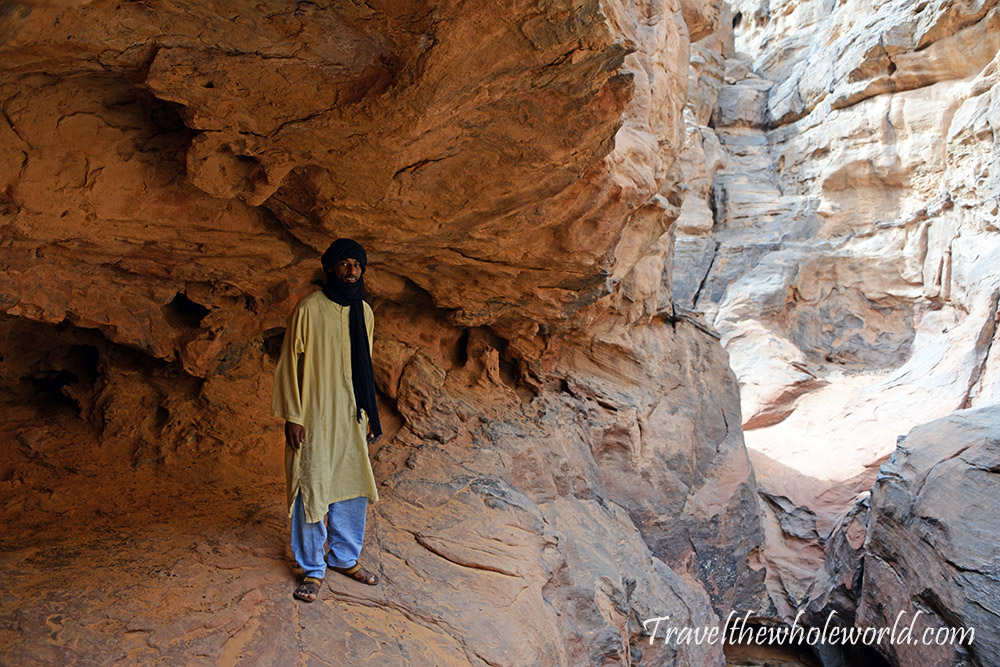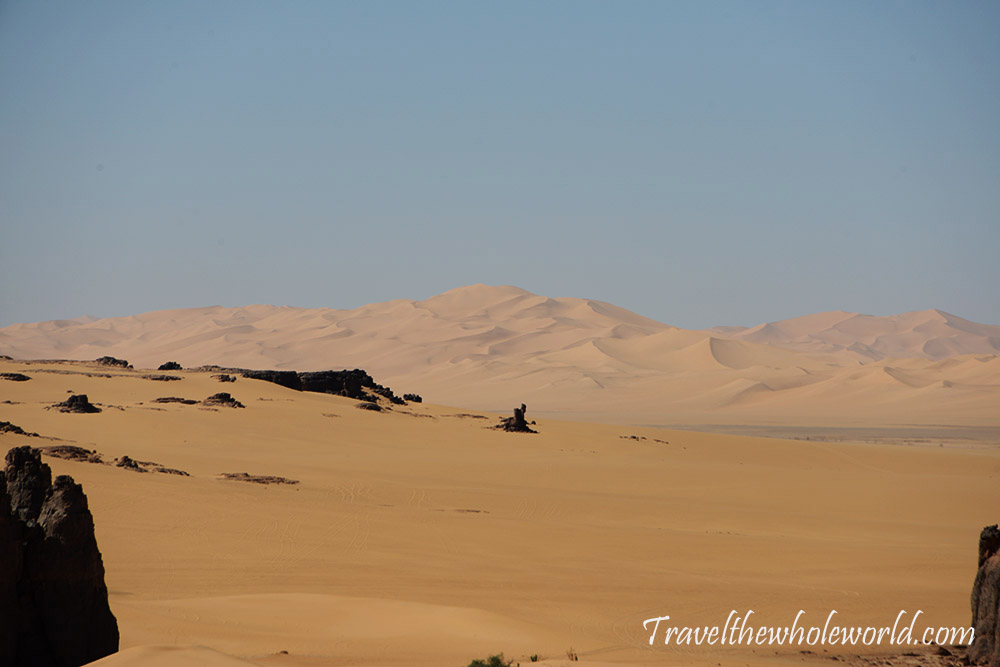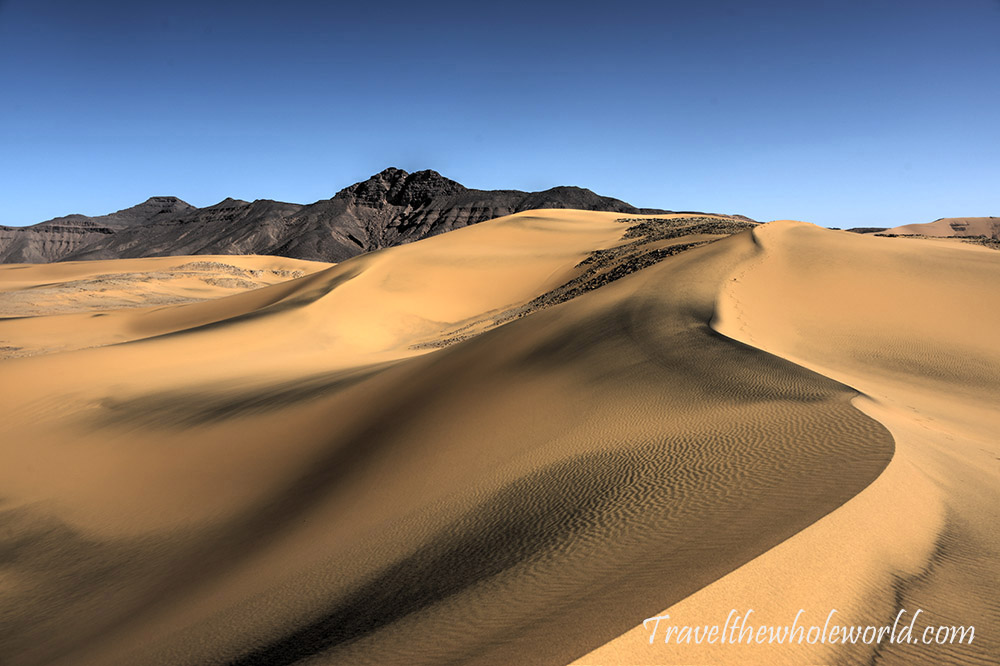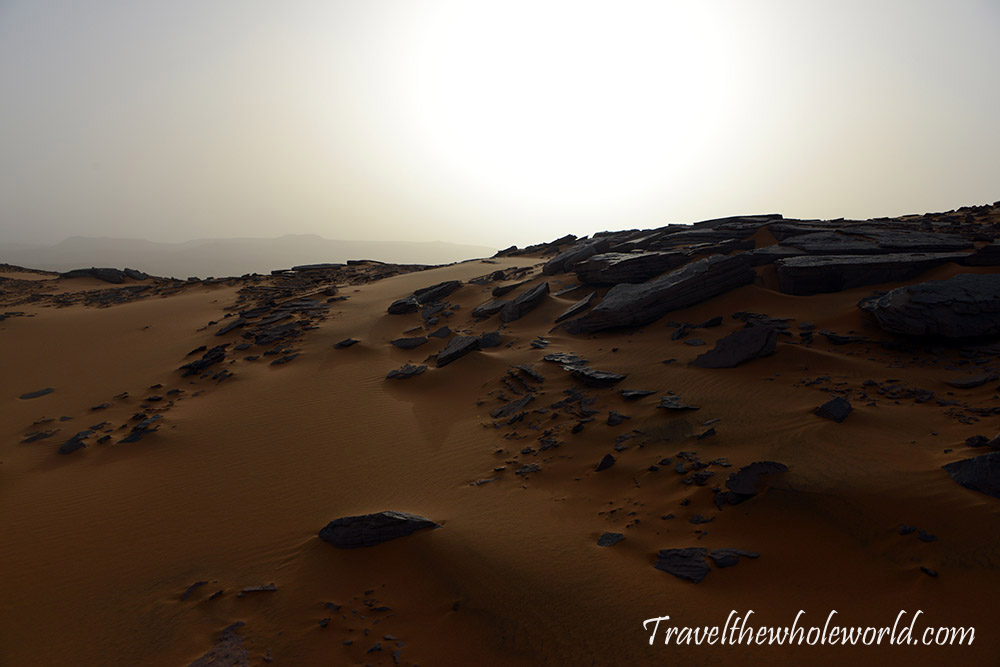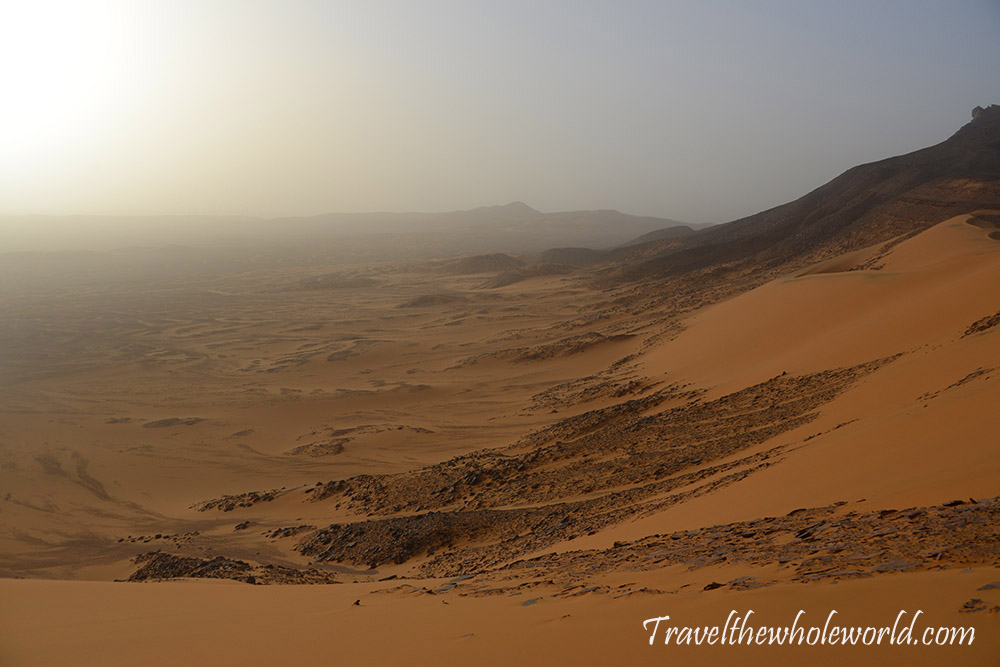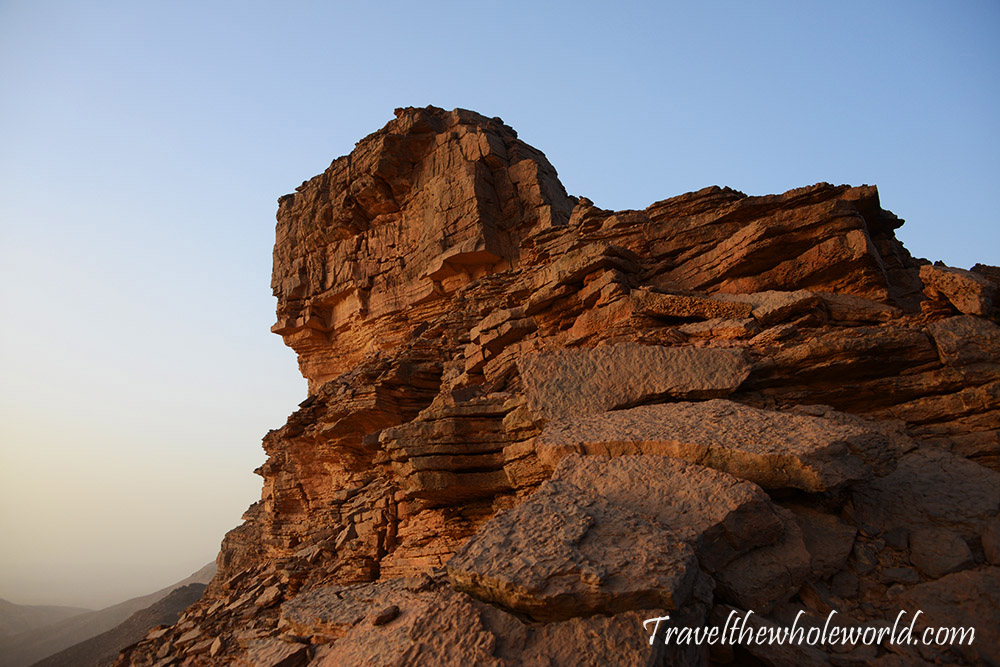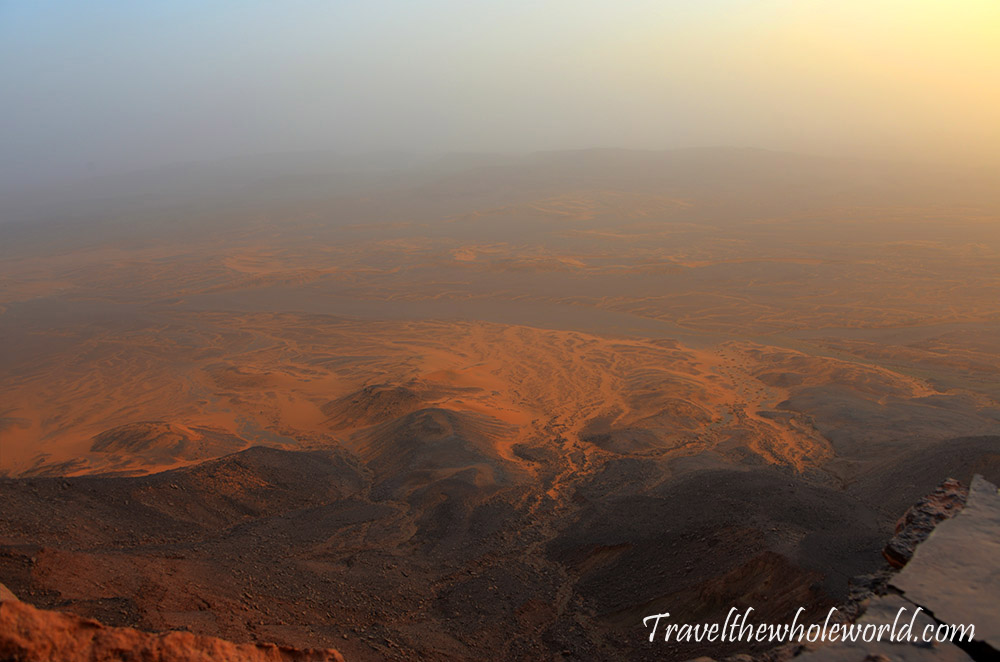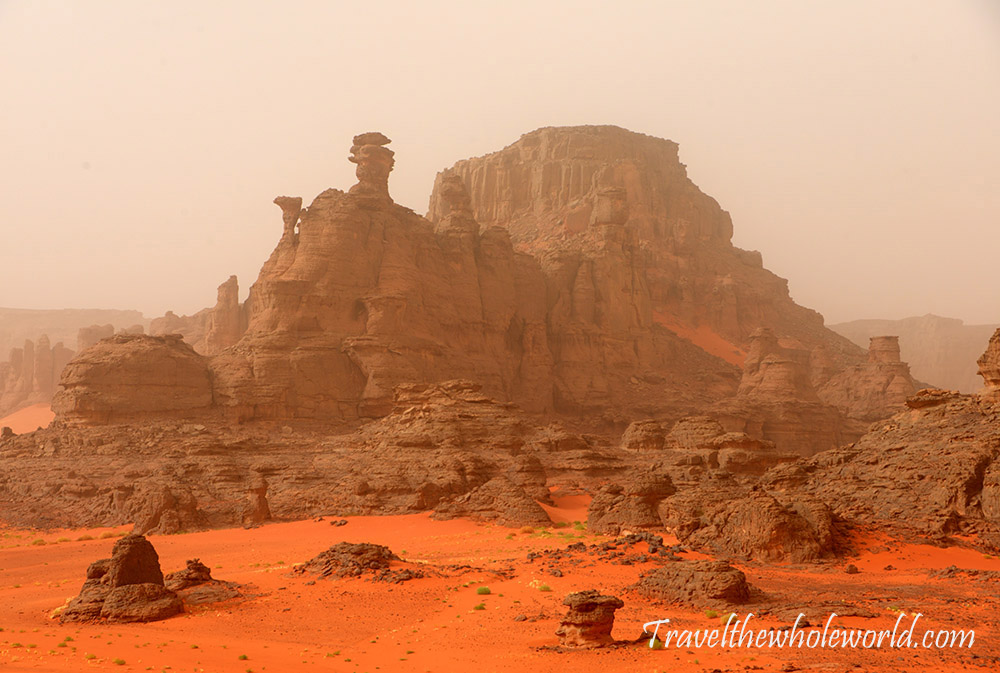Visiting the Sahara
Welcome to the Sahara! The world’s largest true desert and a magical place that should be on every traveler’s list. Although I’ve been here many times, I consider this trip to be my first true Sahara experience. Previously I had been focused on ancient pyramids or border towns along the Sahel, and never had I truly met the Toureg people or camped beneath the desert stars. Most people imagine the Sahara to be endless sand dunes, but in reality there is so much more. My travels here were almost a full week, and I found that wasn’t nearly enough time.
I visited the Sahara in early November when temperatures were much cooler relative to the scorching hot summers. I expected it to be warm and sunny, but my first day was met with overcast skies. As we drove from the town of Djanet into the Sahara, I was surprised that we even saw periods of rain. Incredibly, warning signs along the road showed cars being swept away by waves. Of course I knew how bad flash floods can be in the desert, but in such open plains it was hard to imagine the water reaching that strength. As we sped along the highway for hours it was difficult to appreciate how enormous this desert is. It’s nearly the same size as the United States, so the Sahara would essentially spread from California all the way to my home in Virginia.
It’s worth mentioning how the Sahara came to exist in order to better appreciate it. If you could travel back in time ten thousand years ago you’d find this area to be densely populated by wildlife as well as cavemen. As a matter of fact, this region would more resemble the Serengeti than the harsh environment it has become. The reason for this is the earth’s rotation slightly varies over time along its axis, changing the rains patterns in north Africa. This is a very slow process, and every 20,000 years the Sahara cycles from Savannah to desert and back. Back when cavemen thrived in this region, they often lived in shallow caves or shelters such as this one above. The photo below shows a fossil of a prehistoric plant that once lived in the Sahara.
The cavemen left behind countless paintings and petroglyphs, some of which are said to be 12,000 years old! Many of them show animals that have been extinct in the region for thousands of years, such as elephants, giraffes, and lions.
The petroglyphs are all over the Sahara, ranging from parts of Egypt all the way west to Mauritania. Within southeastern Algeria I saw them daily, and they came in all types. Some were deep carvings into rock walls while others were paintings. Many were destroyed by the elements and barely recognizable, but others that were protected by the elements rock survived. The tribal man and elephant were some of the better preserved carvings.
The Sahara is now it it’s complete desert form, and isn’t expected to return to Savannah until the year 17,000. Most of the wildlife is gone from those times, but desert animals such as the camel have survived. I saw camels within hours of entering the Sahara and wasn’t sure how rare they might be, but I ended up seeing them almost daily. Another desert animal that thrives here is the fennec fox, which you’d have to have a lot of luck to find. In neighboring Tunisia, I saw one that was owned by a local. Like most desert animals, they able to survive long periods of time without water.
Whenever I encountered the camels they almost always seemed to be drawn by what I call desert melons. I first saw one of these in the deserts of Sudan. It looked so out of place in the middle of the desert that I thought someone had surely dropped it. As it turns out they do somehow thrive in the Sahara. I split one open and found it even smelled like a melon. My friend in the Sahara warned me these were poisonous and to not touch the insides. I thought this was an exaggeration, but after researching he was telling the truth. Eating one of these could be a death sentence, and they are so dangerous that even touching the insides can blister your skin!
My first day in the Sahara I camped in front of massive sandstone formations. Thanks to the overcast, one of the formations rose up above the desert plains like an evil dark tower. As I stared at it from my tent I couldn’t help but wish I had brought all my climbing gear and made a summit attempt. By the next morning I figured I’d wake up to clear skies, but instead the winds were worse and instead’ of water they carried sand. I had been able to easily see the tower the evening before as well as all its distant friends, but during the sandstorm the visibility was so bad I could hardly see beyond it.
With the distant scenery not visible I was forced to focus on what was immediately around me. Before this trip I had mistakenly thought scarab beetles were unique to the Sahara. Turns out not only do they live all over the world but there are multiple scarab species just in the Sahara alone. I named this one above the blue scarab, and whenever I spotted them there almost always were others nearby. The black scarab below I only saw once.
It is pretty amazing what you can find if you pay close attention. Many of these sights could easily be overlooked if you were just passing through. This butterfly for example was one of hundreds in a small bush below a large rock wall. The photo itself could be from any garden around the world, but in reality was surrounded by sand dunes and giant sandstone walls. Anywhere I found bushes or trickles of water there were always these giant wasps, covered in pollination.
Other formations I could appreciate in the sandstorm if I was up close and personal. Some of them are so massive it’s difficult to get any perspective. If you can see my friend in the lower left you can see how high these walls rise. The photo below is a close up shot of one of the sandstone walls entering into the dunes. I thought it looked like some alien foot stepping into the sand than part of a rock wall.
Lots of the Sahara’s beauty was taken up in the details of its sandstone mountains. These bizarre wind carved features to me were natural abstract artwork.
Without being a geologist I had the advantage of using my own imagination for how some of the features formed in the desert. I invented my own names and theories, and hopefully I wasn’t too far from the truth. I called this phenomenon above and below plate rock. Some of these similar areas looked like a large plate of rock had rested on the floor. Over time I imagined shifting sands underneath cracked and fractured the rocks into tiny pieces.
The sandstorms were bad enough that I lost a day of travel here. We had intended to drive further out to campsite right on the border of Libya. Instead we were forced to camp between some large walls that somewhat protected us. Initially I was annoyed to have my food and drink covered with sand, but finally I gave up and accepted it as part of the experience. I found if you didn’t bite all the way down when you chewed your food you could avoid the scratchy noise of sand grinding in your teeth. I refused to completely lose the day though, so when things seemed to have died down a bit I was able to convince my driver Moukadi to climb up a small rock formation with me. Some of the holds were challenging but since it was so short none of it was overwhelming. Above the formation we took in the view, and I snapped this picture of Moukadi.
Other hikes in the Sahara are possible, but double the challenge with all the sand. I’d love to have actually done a true rock climb, but in this region of the desert the sandstone isn’t so stable. There were definitely some areas that I would have trusted but for the most part you’re taking a higher risk. West of here are the Ahoggar granite mountains which supposedly have world class climbing. Currently they are occupied by terrorists, so I’ll have to save that for another trip. On a clear day when the sandstorms were gone I climbed up this small formation.
Since sandstone is much more fragile than other rock such as granite, it’s a lot easier for nature to carve it over time. That’s why in sandstone you’ll often find unique features such as natural arches. America’s arch national park is also sandstone, and likewise this region of the Sahara had countless arches and natural bridges as well.
During my short hikes and climbs I saw very little wildlife. Unlike most natural areas of the world, you can pass a full day in the Sahara without spotting anything. Most of the desert wildlife is nocturnal, but with some luck and patience you can still see quite a bit. This bird was probably the most common animal I saw, often seeing them daily. Only once did I spot this hawk surveying from above.
I saw several lizards of all sizes, but this one was the only one I photographed. I had scared him by climbing up a water polished rock which looked to turn in a waterfall during a rainstorm. He ran under some rocks and I gave up trying to find him. I climbed higher and when I returned I saw him below back in the sun. Probably waiting for a grasshopper.
Other animals stayed well hidden but left their footprints behind. These have to be weeks old judging by how far apart the ground has split, but I often saw fresh canine prints in the sand that appeared from the previous night. This odd looking footprint was left behind by one of the locals on my trip.
The highest sand dune in the world resides in the Namib Desert and is known as Sousouveli which rises about 1,000 feet or over 300 meters. Although I’ve visited Sousouvlei, I found the dunes here to be equally impressive. It was hard to imagine that none of these dunes surpassed those in the Namib desert. But I assume perhaps even if they did maybe the catch was those in Namibia were of pure sand, where it seemed most of these massive dunes were blanketing rocky mountains underneath.
One day as we drove to a new camp I got a glimpse of an impressive peak rising about the desert plains. The scraggly summit looked like it might even require a rope, and may have risen three or four hundred meters. I figured I could reach the top of the mountain within 90 minutes. This photo was taken the following morning with clear skies, but the evening before was another one of low visibility.
I set off for my mini adventure and left my camp just after four in the afternoon. My first feat was to climb up a long sand ramp until I gained the ridge. From the drive in, it looked like if I headed north along the ridge I’d eventually reach the summit, and could trace my steps back to camp. I took the picture above just as I gained the ridge, and below you can see my first view on the other side with some poor visibility.
I wasn’t too worried about getting lost since the climb seemed to be straight forward, but I realized it’d likely be dark on my return. As I continued my ascent I came across a false summit, which added a bit more time than I had planned on. Luckily the real summit was only an additional 20 minutes. My main fears on this climb was all the loose rock. I worried about dislodging a massive boulder that’d either injury me or somehow make the route impassable. There was definitely a chance of a large boulder coming loose, but anything that looked unstable I avoided.
Before I stepped on the summit I had to inspect the base of it to make sure it wouldn’t crumble away with my weight. Once I felt confident I stood on the top of the peak and enjoyed the view of the desert plains below. The visibility was limited but this made it more beautiful in it’s own way. I could still appreciate the different shades of sand and rock below me, with some parts that I could imagine one might mistake for water!
And finally my favorite scene from my entire trip in the Sahara! During all my travels this is one of the most bizarre and alien landscapes I’ve ever seen. This photo was taken during the sandstorm when red sand filled the air and tinted the sky.
